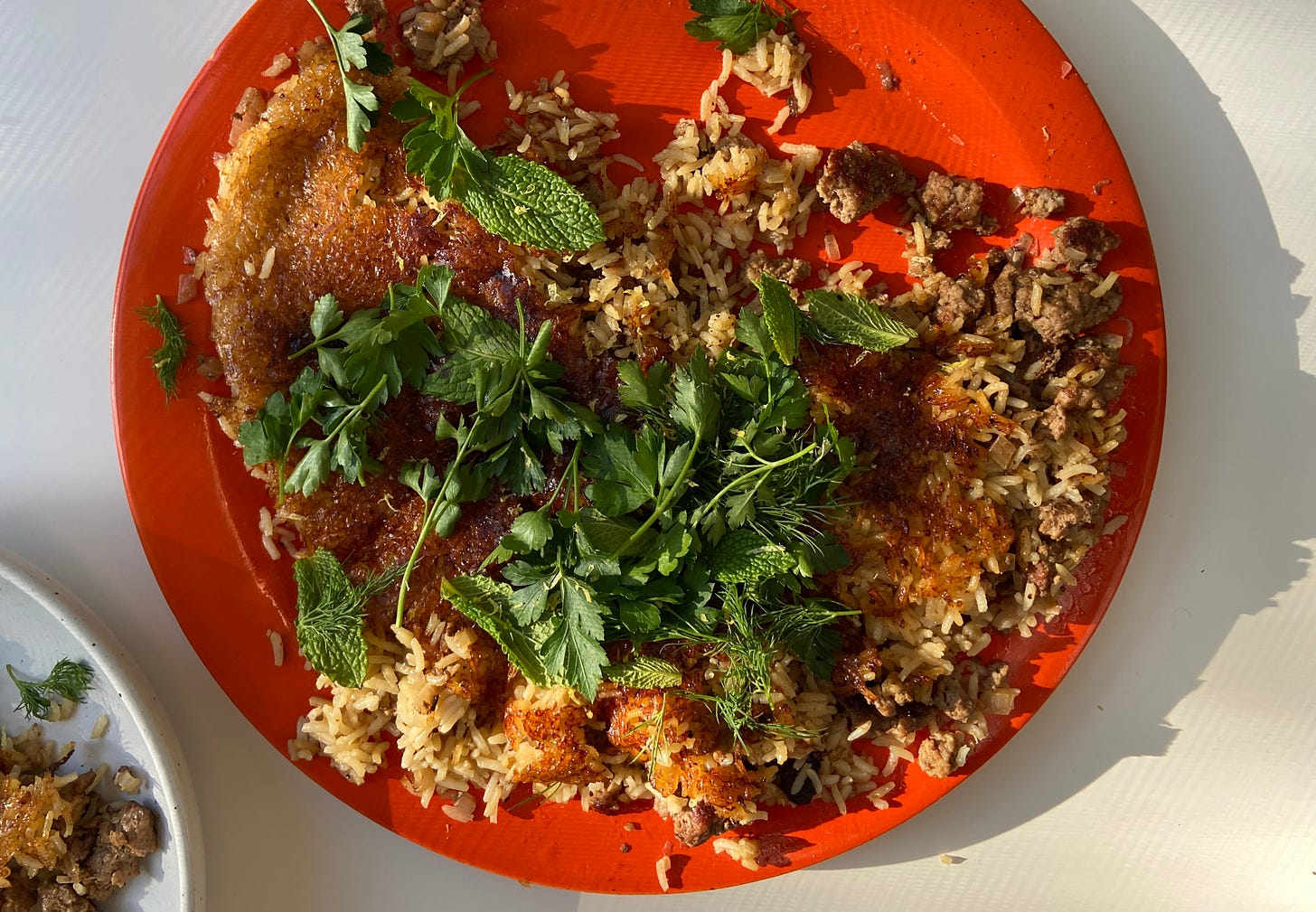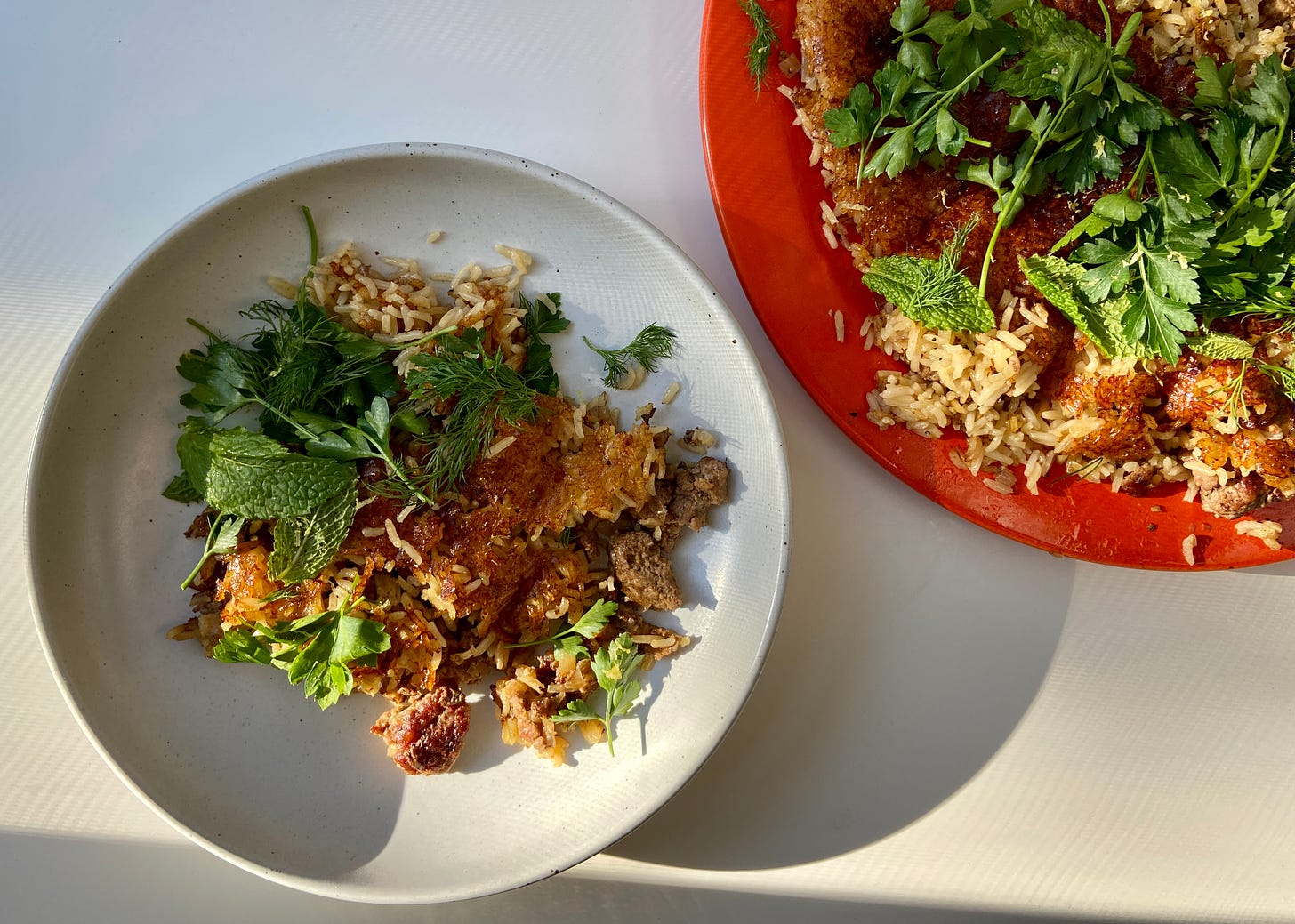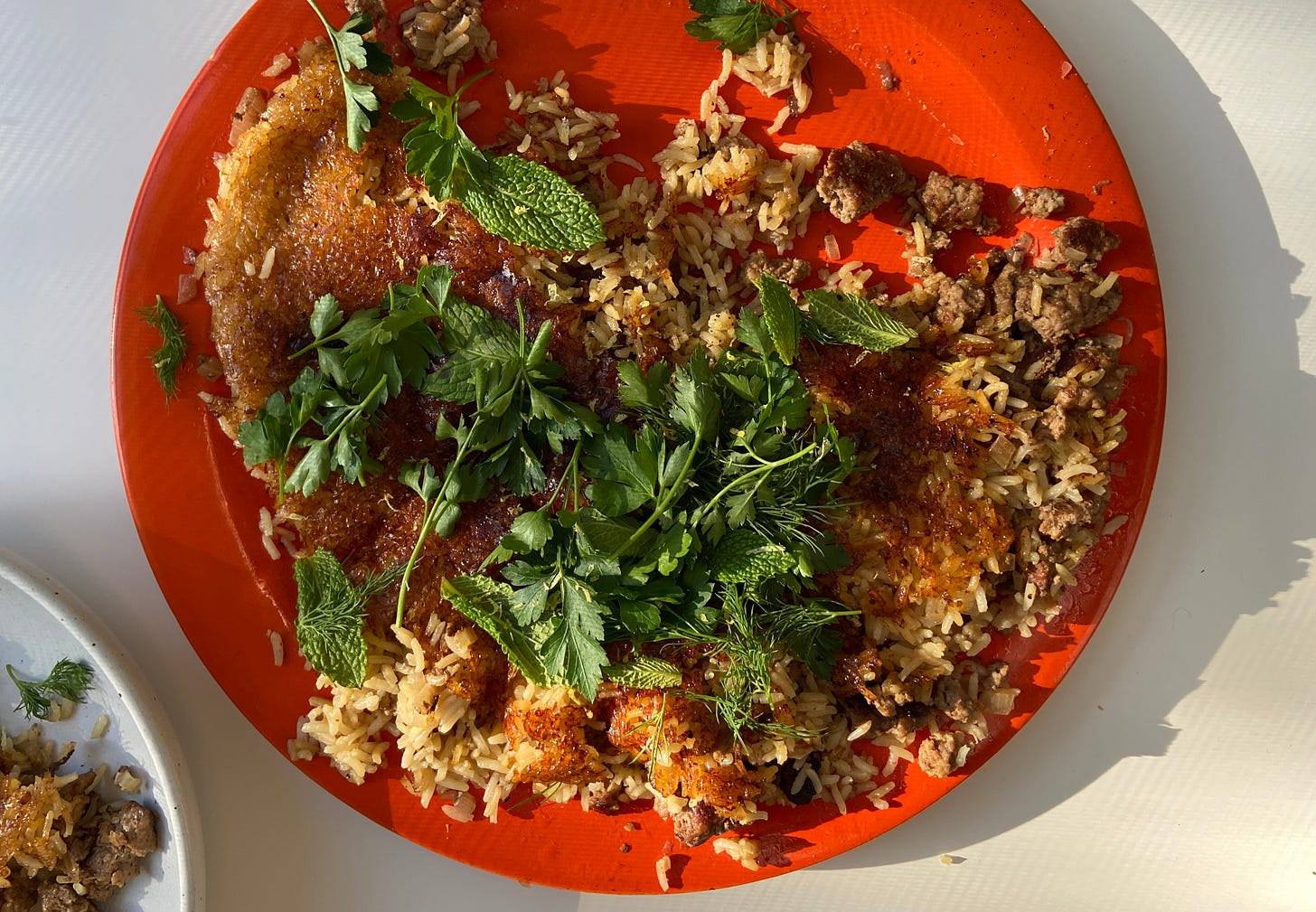What is the point of having a Substack if not to go on and on about something no editor would ever green-light?
That’s what I’m saying! So should we talk about ground meat? The way recipes typically tell you to cook it reads something like this:
Heat oil in a large skillet over medium-high. Add ground beef/pork/turkey/chicken/lamb, season with salt and pepper, and cook, breaking meat up into small pieces, until the meat is browned and cooked through, about 5 minutes.
The goal of this step is to cook the meat through and get a really browned exterior. The browning is key to deep flavor and avoiding unappetizing gray blobs. If we don’t brown, we are bummed.
But these are the problems I experience with the traditional method (tl;dr: My meat typically ends up cooked but more tough than browned):
Splatters.
The meat juices meeting the oil makes splatters.
Gray meat.
Breaking up the meat into little pieces crowds the pan and causes the meat to steam and grey instead of brown. Also, salt draws moisture out, making more liquid in the pan, the opposite climate needed for browning.
Tough meat.
Littler pieces of meat cook faster than big pieces, so the meat could overcook and toughen before the outside can brown.
Aromatics conundrum.
When do you sauté your onions, garlic, spices, and whatever other aromatics you’re using?
Before meat
Remove vegetables from the pan before adding meat > tedious to pick out all those bits.
Leave them in the pan > could burn.
With the meat > vegetables release liquid, making it harder to brown.
After meat
Remove meat from the pan before adding vegetables > tedious.
Leave meat in the pan > could overcook.
Announcing: The New-Classic Method for Cooking Ground Meat
This method would read something like this in a recipe:
In a large skillet, press the ground beef/pork/turkey/chicken/lamb into an even layer to fill the skillet/pot. Set over medium-high, sprinkle with the garlic/onions/spices/aromatics, and cook, undisturbed, until the meat is deeply browned underneath, 6 to 8 minutes (the meat won’t be fully cooked). Season with salt and pepper, then break up the meat into bite-size pieces and stir until the aromatics are softened/fragrant, 1 to 2 minutes.
Here’s how and why it differs from the usual method (tl;dr: it just works better for me):
Start in a cold pan.
This allows the meat to gradually heat and fully render its fat.
Oil only for meat with less than 10% fat.
Ground meats, including meat with just 10% fat, have enough fat that if you render it fully (see above), it will unstick itself from the pan. If your meat has less than 10% fat, like some turkey and chicken, go ahead and add a tablespoon of oil before adding the meat. Also no splatters because cold, wet meat isn’t hitting hot oil.
Smash like a smash burger.
Smash burgers beat regular burgers in crispiness, so why not treat your pound of meat like a huge smash burger? Smush the meat into the pot or skillet so it fills the bottom, creating plenty of contact with the pan for maximal browning.
Add aromatics, if using, on top of the patty.
The steam rising from the meat beneath the aromatics will start to warm the vegetables and spices so that when you stir the aromatics into the beef, they’ll be tender and fragrant at the same time as the meat’s cooked.
Only once the meat is browned underneath, add salt.
Now that the meat is browned underneath, it’s okay to sprinkle it with salt and let some moisture release. Plus, because it’s in such a wide, flat patty, it’s really easy to evenly, fully season the meat.
Break it up into smaller pieces at the very end.
Now that so much of the meat is browned, we can go ahead and break it up into small pieces and stir it into the partially-softened aromatics. It will release some moisture, which is totally fine because we already got our meat browned. This will just take a minute or two, which means no burnt spices or garlic and no tough meat.
This, here, is the definition of too much information. But sometimes you just gotta get these things out.
Take this method for a spin in this sausage and eggs in purgatory or today’s new recipe, a single skillet deal that combines Greek-style lemon rice, scorched rice, and ground lamb. Ground lamb that is undeniably browned and crisp.
Crispy lemon & lamb rice
Serves 4
2 shallots
1 juicy lemon (or 2 duds)
1 pound ground lamb
2 teaspoons ground cumin
Salt and pepper
1 ¾ cups chicken broth
1 cup long-grain rice (no need to rinse)
2 tablespoons extra-virgin olive oil, plus more as needed
1 cup soft herb leaves and tender stems, ideally at least two (such as dill, cilantro, parsley, mint, basil)
1. Coarsely chop 2 shallots. Zest 1 lemon, then squeeze 3 tablespoons juice. In a large, nonstick skillet, press 1 pound ground lamb into an even layer to fill the skillet. Set over medium-high, sprinkle with the shallots and cumin, and cook, undisturbed, until the meat is deeply browned underneath, 6 to 8 minutes (the meat won’t be fully cooked).
2. Season with 1 teaspoon salt and a few grinds of pepper, then break up the meat into bite-size pieces and stir until the shallots are softened, 1 to 2 minutes.
3. Stir in 1 ¾ cups chicken broth, 1 cup long-grain rice (no need to rinse), the lemon juice and 1 teaspoon zest. Bring to a boil, then cover tightly with a lid, sheet pan or foil, reduce heat to low and cook until rice is tender, 17 to 19 minutes.
4. Uncover the skillet, taste the rice, and add salt and pepper as needed. Use the back of your spoon to poke five or six holes in the rice to help steam escape. Drizzle 2 tablespoons extra-virgin olive oil around the edges and into the holes. Increase heat to medium and cook undisturbed until you start to see golden rice at the edges, 5 to 7 minutes (you can use a spoon or spatula to lift and peek). If you don’t see oil bubbling around the edges or in the holes, drizzle in a tablespoon or two of oil.
5. To eat, loosen the edges and flip the rice onto a big plate or scoop spoonfuls from the pan, making sure to get some of the crispy rice on the bottom. Top with 1 cup soft herb leaves, ideally at least two (such as dill, cilantro, parsley, mint, basil).
PRINT THIS RECIPE
SWAPS
Shallots: garlic, onions, leeks, ginger
Lemon: I hate to say there’s no sub, but…
Ground lamb: You could use ground beef, chicken, turkey, or sausage, or a can of drained and rinsed chickpeas, with additional seasonings like harissa, turmeric, or smoked paprika. I also think some tinned fish would be nice; add on top when the rice is crisping.
Ground cumin: The cumin is grounding the high-note of the lemon here. You could use coriander or crushed fennel seeds in its place, or a spice blend like garam masala.
Chicken broth: You could use water and a little more salt.
Long-grain rice: Could do this with lentils, farro, pasta—just add water if the skillet looks dry before the starch is cooked through. Cook times may vary.
Soft herbs: The herbs are doing a lot here, providing fresh bolts of flavor. You could use something like arugula or watercress or a bunch of thinly sliced scallions or shallots.
STUFF TO ADD
With the rice: cubed winter squash or sweet potatoes.
In the last 5 to 7 minutes of the rice cooking: kale, broccoli rabe or florets, or cauliflower.
With the herbs: feta, olives, yogurt, tahini sauce, toasted almonds or cashews, a fried egg.
Recipe testing: Cybelle Tondu
Brand design: Linda Huang









This is the most useful cooking information I've read since I learned how to cook salmon (like 2 years ago?). Thank you from someone who cooks food. ❤️
Just prepared turkey for tacos using this method …..brilliant! So much tastier than the way I’ve made it for decades. Thank you for your all your techniques & cooking suggestions.